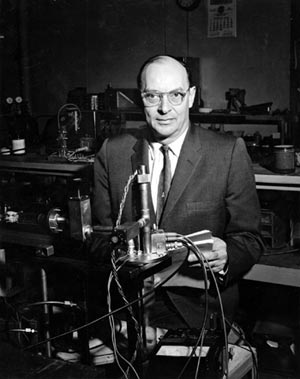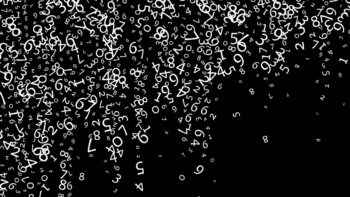True Genius: The Life and Science of John Bardeen
Lillian Hoddeson and Vicki Daitch
2002 Joseph Henry Press 352pp £20.95/$27.95hb
Scientific genius is no easier to pinpoint than artistic genius. It derives from a combination of factors, including – but not limited to – intuition, imagination, far-reaching vision, exceptional native gifts that blossom into significant technical skills, and the willingness and ability to challenge conventional wisdom. Perhaps even more importantly, scientific genius depends on an instinct for invention, an ability to focus on the problem at hand, and a determination to pursue that problem to a successful conclusion.
John Bardeen, the inventor of the transistor and leader of the team that developed the microscopic theory of superconductivity, possessed all of these qualities. But what made him different from so many fellow scientific geniuses of the 20th century – Bohr, Dirac, Einstein, Feynman, Gell-Mann, Landau, Oppenheimer and Pauli? The answer lies not only in his two Nobel Prizes for Physics (in 1956 and 1972), but also his remarkable modesty, his deep interest in the application of science, and his genuine ability to collaborate easily with experimentalist and theorist alike. He was, moreover, a devoted and loving husband and father, who imparted to his children his passion for science. Indeed, his two sons – Jim and Bill – became distinguished theoretical physicists in their own right.
This biography of Bardeen captures well these aspects of his character as they developed and were refined during his life-long voyage of scientific exploration. Born in Madison, Wisconsin, in 1908, John soon displayed formidable mathematical and athletic abilities. After graduating from high school aged just 13, he took two years of additional high-school courses before starting his undergraduate studies at Wisconsin. Bardeen graduated in 1928 despite also having taken a year off during his degree to work in Chicago.
Following two years of graduate work in electrical engineering at Wisconsin – and a three-year spell developing new approaches to oil exploration at Gulf Oil in Pittsburgh – Bardeen went to Princeton as a graduate student in 1933. He initially thought that he might work with Einstein, who had just joined the Institute for Advanced Study. But after arriving, Bardeen decided instead to work with Eugene Wigner. He completed his PhD on the work function of metals in just two years.
After three years as a postdoc at Harvard, Bardeen married Jane Maxwell in 1938 and moved to Minnesota as a junior member of the faculty there. Following a wartime stint at the Naval Ordinance Laboratory, he joined Bell Labs in 1945. It was here, working closely with Walter Brattain – his old friend and office-mate – that Bardeen invented the transistor in 1947.
Bardeen’s voyage reached its apogee at the University of Illinois in Urbana-Champaign in 1957. Following six years of sustained effort, Bardeen – along with his postdoc Leon Cooper and his graduate student Bob Schrieffer – solved the most significant scientific challenge of his time. Together they developed a microscopic theory of the superconductivity of metals at very low temperatures. In the years that followed, as a consultant to Xerox, Bardeen also played a major role in the development of xerography, while continuing to work at Illinois on a wide variety of problems in condensed matter.
Bardeen’s perhaps unique ability to move seamlessly from fundamental theory to applications of major commercial importance is described well by the authors. It could be argued that no one changed the lives of people everywhere more than Bardeen. Yet, as the authors emphasize, his fundamental scientific contributions were of comparable importance.
So how was it that Bardeen and his young collaborators were able to solve the riddle of superconductivity? The solution had, after all, eluded their distinguished theoretical colleagues – Blatt, Feynman, Frohlich, Ginzburg, Gor’kov, Landau and London. The answer is, in part, to be found in Bardeen’s emphasis on understanding the experimental facts and developing a phenomenological description of these while simultaneously pursuing a number of different theoretical scenarios with his younger colleagues, of whom I consider myself fortunate to have been one.
His instinct that a new mathematical approach was required, his intuition that it might arise out of an improved understanding of the polaron problem, and his realization that it was essential to sort out the combined role of the electron-electron and electron-phonon interactions all played a part. So did his focus on the behaviour of a few electrons outside the Fermi sea, together with his willingness and ability to learn new mathematical techniques.
Equally important was his total dedication to cracking the problem, and the encouragement, support and freedom to pursue their own ideas that he gave to his younger colleagues, who played key roles in the development of the theory. The resulting BCS theory is arguably one of the major contributions to physics in the 20th century. It not only solved the riddle of superconductivity, but also had a lasting impact on the fields of astrophysics, nuclear physics and particle physics.
There are several tantalizing “what if” questions in Bardeen’s career. What if – rather than continuing with engineering at Madison and then going into industry for three years – he had been successful in his 1929 application to Trinity College, Cambridge, for one of their coveted fellowships? What if – as a consequence of incorrect experimental results – Eugene Wigner had not become discouraged about understanding nuclear physics in 1932 and therefore not spent three critical years studying condensed matter? In either case, would Bardeen’s scientific interests have gone in quite a different direction? And what if Bill Shockley, who was single-handedly responsible for Bardeen leaving Bell Labs in 1951, had supported John’s continuing interest in the fundamental physics of semiconductors and his desire to work on superconductivity? Would Bardeen have been able to solve superconductivity if he had stayed at Bell Labs?
Lillian Hoddeson and Vicki Daitch mostly get John Bardeen right, which makes the book a great read and a valuable contribution to the history of present-day physics. As his first postdoc from 1952 to 1955, and as a physics colleague who occupied the adjoining office from 1959 to 1991, I spent much of my scientific career in close proximity to John. I therefore had an excellent opportunity to observe, up close and personal, Bardeen’s approach to science and his interaction with his students, colleagues, friends and family. Hoddeson and Daitch have done a first-rate job in describing these issues and in chronicling the first half of his life up to his move to Illinois in 1951.
Where there is room for improvement is in their description of that second half of his career, from his early days at Urbana to the development of the BCS theory and the theory of mixtures of helium-3 and helium-4, and on the nature of his leadership role in condensed matter in Urbana. I would have preferred more on the unique scientific environment that he found, nurtured and perpetuated there. Several first-person accounts of some of these facets of John’s career can be found in a special issue of Physics Today (April 1992), which examines the life and science of this unique and much-admired individual.
One wishes, too, that the authors had intertwined their account of Bardeen’s life with an equally lucid account of the development of our understanding of condensed matter between 1950 and 1980 – an understanding made possible in no small part by Bardeen’s seminal work. It is a story that remains to be told at the level achieved by George Johnson in Strange Beauty – his meticulously researched biography of Murray Gell-Mann – in which the science and the person are equally well described.




